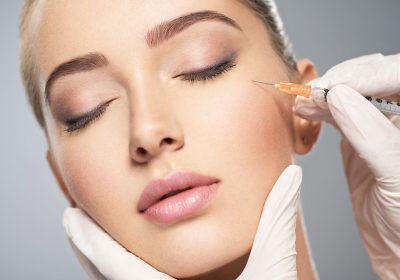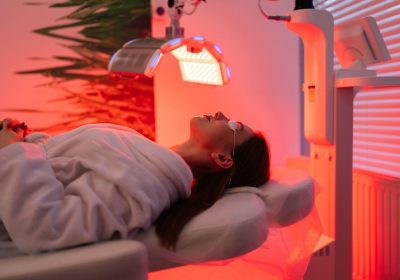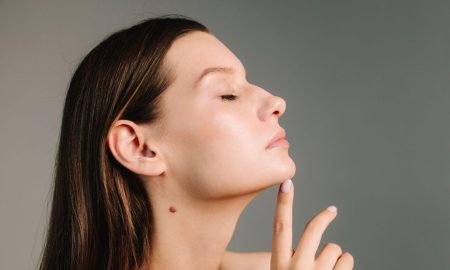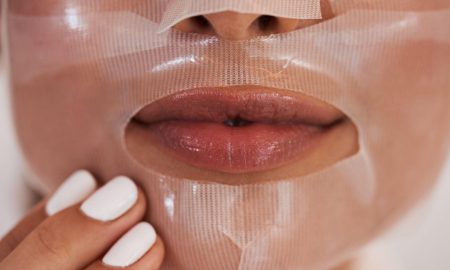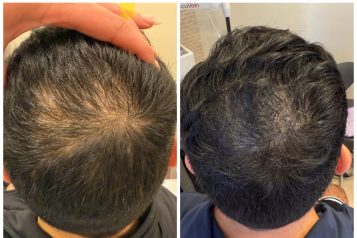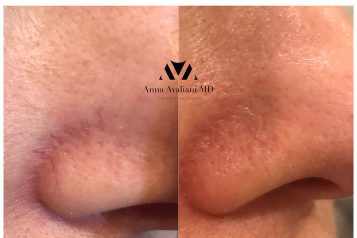 Photo Credit: Shutterstock
Photo Credit: Shutterstock
Lacey Foster, Morvarid Mehdizadeh, Samuel Lin, MD, FACS
The appearance of the hands can often reveal one's age faster than the face, yet hand care is frequently overlooked in skincare routines. Constant sun exposure, environmental stressors, and natural loss of skin volume contribute significantly to early aging signs on the backs of the hands.1 Over time, the skin on the hands becomes thinner, leading to increased visibility of veins, wrinkles, and pigmentation issues.1,2 To combat these changes and maintain a youthful appearance, it is essential to extend skincare practices beyond facial treatments and incorporate targeted strategies specifically for hand rejuvenation.
Establishing a targeted skincare routine can help address these concerns and improve overall skin texture and tone. Retinol is a key ingredient for hand rejuvenation because it stimulates collagen production, which improves skin elasticity and reduces the appearance of fine lines and wrinkles. Retinol also promotes cell turnover, which helps fade dark spots and sun damage. However, because the skin on the hands is thinner and more prone to irritation, it is important to start with a low-strength retinol (0.1% to 0.5%) and apply it at night. Following up with a rich, hydrating hand cream can help counteract any dryness or irritation caused by retinol. To protect the newly refreshed skin, applying a hand cream with SPF 30 or higher during the day is essential to prevent further sun damage and hyperpigmentation.1,3
Exfoliating scrubs are another important step in a hand care routine because they help remove dead skin cells, allowing active ingredients in other products to penetrate more effectively. Chemical exfoliants, such as lactic acid and glycolic acid, are often more effective than physical scrubs because they penetrate deeper into the skin to dissolve dead skin cells and improve overall texture.4 A mild scrub with small, non-abrasive particles can also be used to smooth rough patches and enhance skin radiance. However, it is important to avoid over-exfoliating, as the thin skin on the hands can become dry and irritated. Limiting exfoliation to one to two times per week is usually sufficient to see improvement without compromising the skin barrier. After exfoliating, it’s crucial to apply a nourishing hand cream to lock in moisture and support the skin’s natural repair process.
When choosing a hand cream, look for ingredients that provide deep hydration and restore the skin barrier. Hyaluronic acid and glycerin are powerful humectants that draw moisture into the skin, keeping it plump and hydrated. Niacinamide is another beneficial ingredient that helps to reduce hyperpigmentation and improve skin texture by strengthening the skin’s protective barrier.5 Emollients like shea butter and squalane help soften the skin and prevent moisture loss, while ceramides reinforce the skin barrier, making the skin more resilient to environmental stressors. Hand creams with added antioxidants, such as vitamin C and vitamin E, can further protect against oxidative stress and environmental damage.6 Incorporating a product with SPF 30 or higher during the day is critical for preventing future sun damage and preserving the results of other treatments.
Consistency is key when it comes to hand care. Using a combination of retinol, exfoliation, and daily moisturizing with SPF can significantly improve the appearance of the hands over time. For more advanced rejuvenation, professional treatments such as fillers, fat grafting, and laser therapy can be combined with a strong at-home skincare regimen to achieve the best results. A well-rounded hand care routine not only improves skin texture and tone but also helps maintain a youthful and healthy appearance well into the future.
Beyond at-home creams, in-office treatments for hand rejuvenation have also shown significant benefits. The three most frequently described treatment modalities for hand rejuvenation are fat transfer, injectable fillers, and lasers or light-based therapies.7-9 Fat grafting and injectable fillers, such as hyaluronic acid and calcium hydroxylapatite, primarily aim to replenish volume deficits caused by tissue atrophy.7,10-11 In contrast, laser and light-based therapies are typically employed to improve superficial skin changes, such as wrinkles and texture irregularities.7,12 Examples of these treatments include intense pulsed light (IPL), neodymium-doped yttrium aluminum garnet (Nd:YAG), and erbium yttrium aluminum garnet (Er:YAG) lasers.7,12 Additionally, nitrogen plasma therapy, which functions similarly to laser treatments, has shown significant effectiveness in reducing wrinkles and hyperpigmentation.13 Chemical peels have been less frequently studied in the context of hand rejuvenation but have also generally demonstrated positive outcomes.14 Red light therapy represents another emerging option for hand rejuvenation. It promotes skin health by stimulating fibroblast activity, which enhances collagen synthesis, thereby improving skin strength, elasticity, and texture.14 By increasing collagen production, red light therapy reduces wrinkles and fine lines, and its ability to enhance circulation further aids in decreasing inflammation and accelerating the healing of hyperpigmentation, stretch marks, melasma, and sun-damaged skin.14
Across all minimally invasive modalities, most studies report favorable outcomes and high patient satisfaction rates.7 Although transient side effects such as redness, swelling, or discomfort immediately following treatment are frequently observed, these in-office treatments are otherwise considered safe with a low risk of complications.8 While each modality has been extensively evaluated individually, there is currently limited evidence regarding optimal combinations of treatments.9 Strategic integration of these modalities by experienced clinicians likely holds the greatest promise for achieving superior aesthetic outcomes tailored to patient-specific needs.9
While topical creams and exfoliation form the foundation for preserving hand health, advanced clinical treatments provide the necessary enhancement for reversing deeper signs of aging. Regardless of the methods chosen, consistency and sun protection remain key components in preserving youthful, radiant hands over the long term. Ultimately, investing in both prevention and rejuvenation not only enhances appearance but also fosters greater confidence and self-care, helping your hands reflect your vitality for years to come.
References:
- Griffiths TW, Watson REB, Langton AK. Skin ageing and topical rejuvenation strategies. Br J Dermatol. 2023 Oct 30;189(Suppl 1):i17-i23. doi: 10.1093/bjd/ljad282. PMID: 37903073.
- Har-Shai L, Ofek SE, Lagziel T, Pikkel YY, Duek OS, Ad-El DD, Shay T. Revitalizing Hands: A Comprehensive Review of Anatomy and Treatment Options for Hand Rejuvenation. Cureus. 2023 Feb 28;15(2):e35573. doi: 10.7759/cureus.35573. PMID: 37007409; PMCID: PMC10063163.
- Mukherjee S, Date A, Patravale V, Korting HC, Roeder A, Weindl G. Retinoids in the treatment of skin aging: an overview of clinical efficacy and safety. Clin Interv Aging. 2006;1(4):327-48. doi: 10.2147/ciia.2006.1.4.327. PMID: 18046911; PMCID: PMC2699641.
- Samargandy S, Raggio BS. Chemical Peels for Skin Resurfacing. 2023 Oct 29. In: StatPearls [Internet]. Treasure Island (FL): StatPearls Publishing; 2025 Jan–. PMID: 31613532.
- Juncan AM, Moisă DG, Santini A, Morgovan C, Rus LL, Vonica-Țincu AL, Loghin F. Advantages of Hyaluronic Acid and Its Combination with Other Bioactive Ingredients in Cosmeceuticals. Molecules. 2021 Jul 22;26(15):4429. doi: 10.3390/molecules26154429. PMID: 34361586; PMCID: PMC8347214.
- Addor FAS. Antioxidants in dermatology. An Bras Dermatol. 2017 May-Jun;92(3):356-362. doi: 10.1590/abd1806-4841.20175697. PMID: 29186248; PMCID: PMC5514576.
- Ovadia SA, Efimenko IV, Lessard AS. Dorsal Hand Rejuvenation: A Systematic Review of the Literature. Aesthetic Plast Surg. 2021;45(4):1804-1825. doi:10.1007/s00266-020-02077-3
- Chandan N, Puyana C, Haber R. Combination Approaches to Hand Rejuvenation: A Review of the Literature and Discussion. Dermatol Surg. 2023;49(2):164-170. doi:10.1097/DSS.0000000000003673
- Butterwick K, Sadick N. Hand Rejuvenation Using a Combination Approach. Dermatol Surg. 2016;42 Suppl 2:S108-S118. doi:10.1097/DSS.0000000000000687
- Rohrich RJ, Abraham JT. Hand Rejuvenation with Fat Grafting. Plast Reconstr Surg. 2023;151(4):614e-617e. doi:10.1097/PRS.0000000000009996
- Micheels P, Besse S, Sibon M, Elias B. Hand Rejuvenation With A Hyaluronic Acid-Based Dermal Filler: A 12-Month Clinical Follow-Up Case Series. J Drugs Dermatol. 2021;20(4):451-459. doi:10.36849/JDD.2021.5154
- Seirafianpour F, Pour Mohammad A, Moradi Y, et al. Systematic review and meta-analysis of randomized clinical trials comparing efficacy, safety, and satisfaction between ablative and non-ablative lasers in facial and hand rejuvenation/resurfacing. Lasers Med Sci. 2022;37(4):2111-2122. doi:10.1007/s10103-022-03516-0
- Hadian K, Babossalam S, Mahdikia H, et al. Efficacy and safety of non-thermal nitrogen plasma versus long-pulsed Nd:YAG laser for hand rejuvenation. Lasers Med Sci. 2022;37(1):181-191. doi:10.1007/s10103-020-03204-x
- Shurrab K, Alzghayar JN. Low-level laser therapy for skin rejuvenation: A safe and effective solution backed by data and visual evidence. J Cosmet Dermatol. 2024 May 30. doi: 10.1111/jocd.16404
For more information, visit Dr. Samuel Lin's social media:


